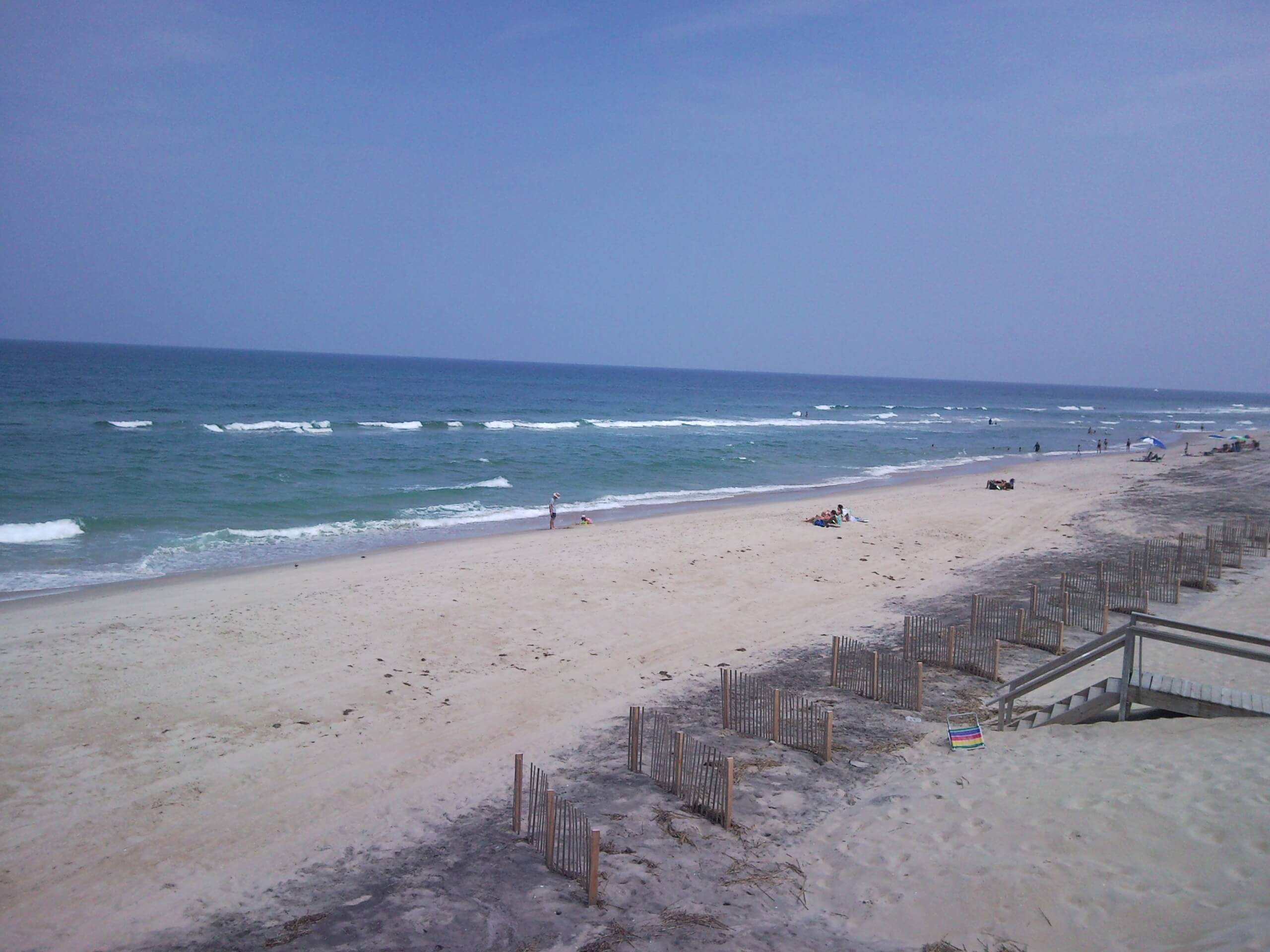
Bright blue sky, crisp ocean breezes, miles of pristine Atlantic shoreline, massive powdery sand dunes. This is what the first vacationers to the Outer Banks found when they came from across the Roanoke Sound in the 1830’s to the barrier Islands that line the coast of North Carolina. Lore tells us that there were already a few people living on the islands. They came to be known as “Bankers” and were probably fisherman, herders, and shipwreck victims who had lived in the area since the 1700’s.
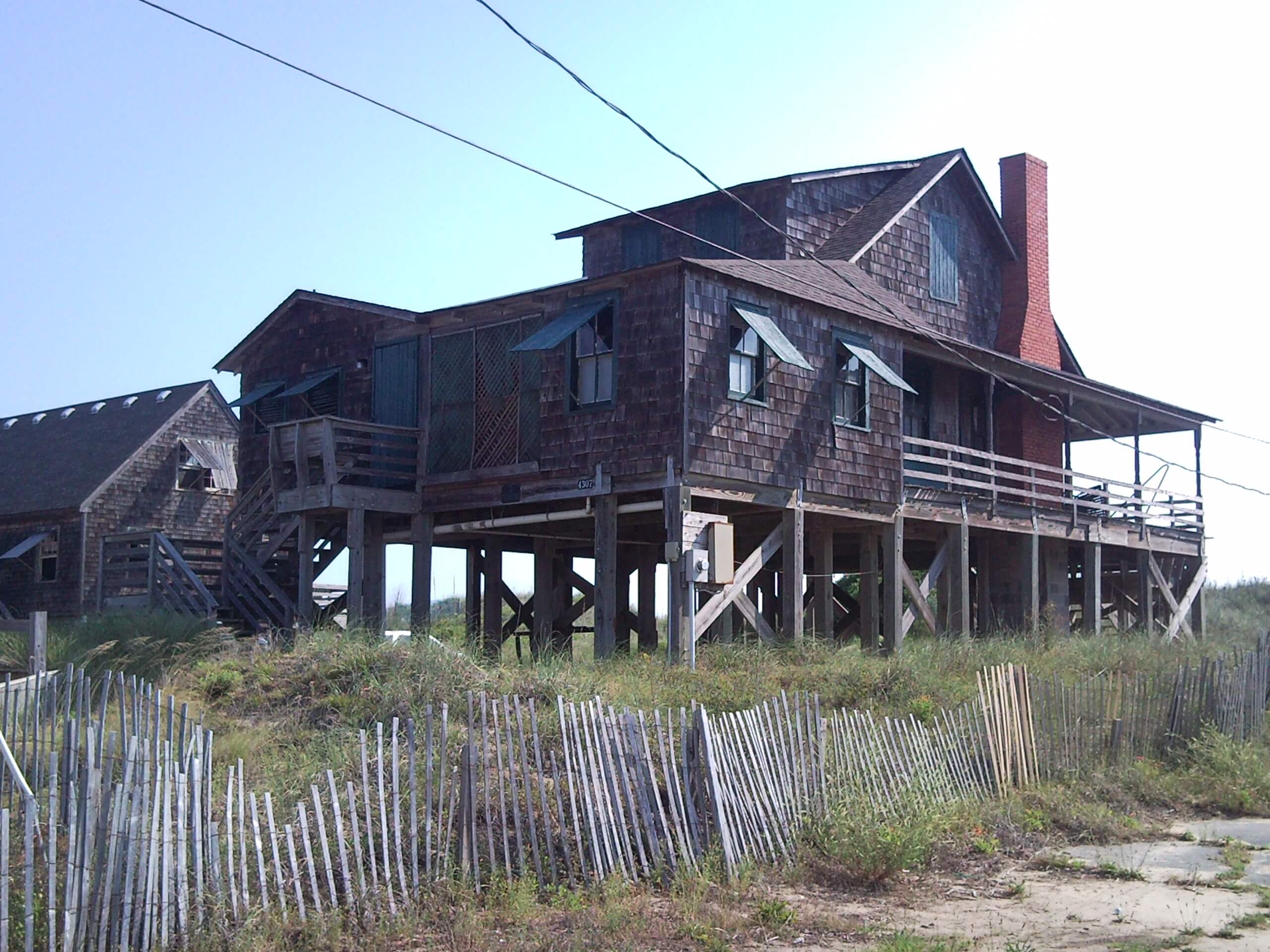
When the mainland visitors began to come, the Bankers sold them fresh vegetables and fish, and built board walks to cross the scorching sands from the Sound to the ocean. In the beginning, visitors stayed in hotels, but around 1855
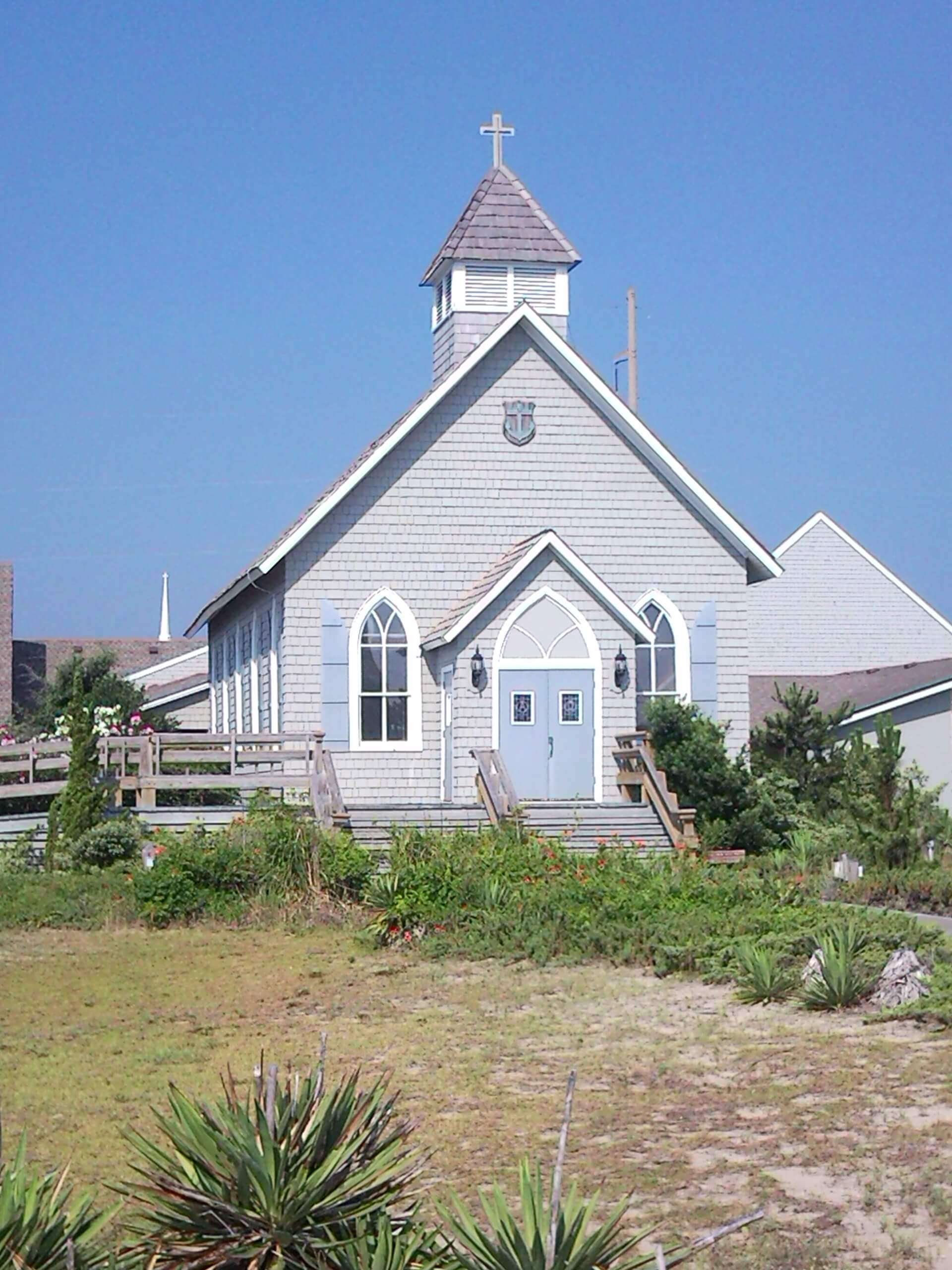
the first oceanfront cottage was built. By 1885 there were 13 cottages, built from ship-salvaged and scavenged wood, along a mile-long stretch of coastline that became known as the Unpainted Aristocracy. Predictably, these cottages needed repair and expansion over time and a local carpenter named Stephen J. Twine rose to the challenge. Over the next quarter century, he built more houses and the St. Andrew’s By-the-Sea Episcopal Church and is largely credited with defining the what is now called Nags Head architecture.
The original cottages were of wood construction with cedar-shingled roofs, propped-shuttered windows, and hip-roofed porches. Long porches had built-in benches to enjoy the fresh ocean breezes and often kitchens were built on the back of the houses to keep the heat of cooking away from the living spaces. About 40 of the original historic houses survive and have been on the National Register of Historic Places since 1977.
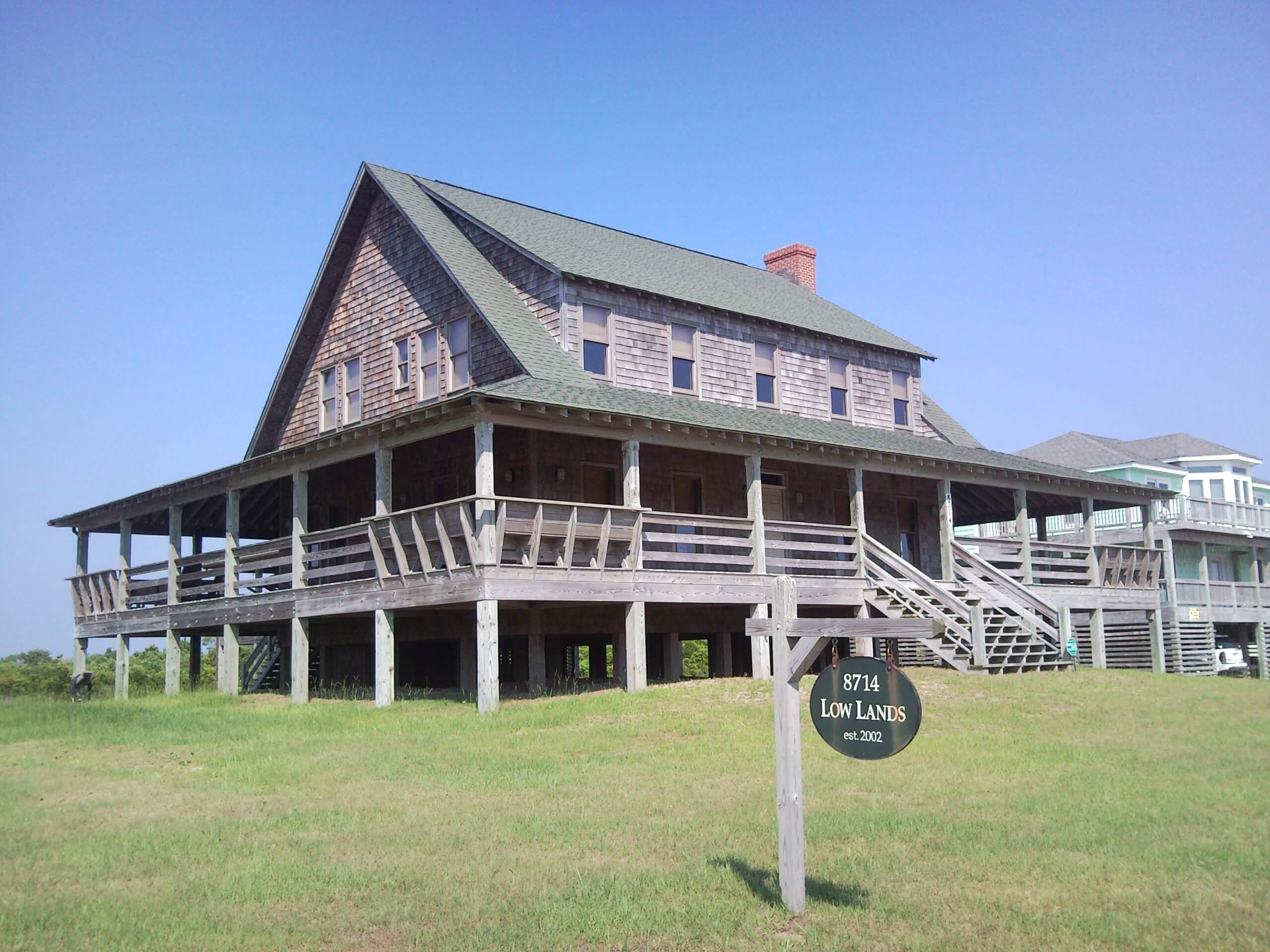
In the 1970’s developers descended on the quiet Outer Banks and soon hundreds of houses were built all along the barrier island where the original Cottage Row stood. Mother Nature, in the form of Nor’easter storms and the relentless ocean tides, has fought back the encroachment of civilization on the pristine sands of the Outer Banks. Because of the risk of flooding and shifting sand, most cottages are raised a story above ground level on pilings, but the ever-changing sands literally wash out from under some beach-front houses.
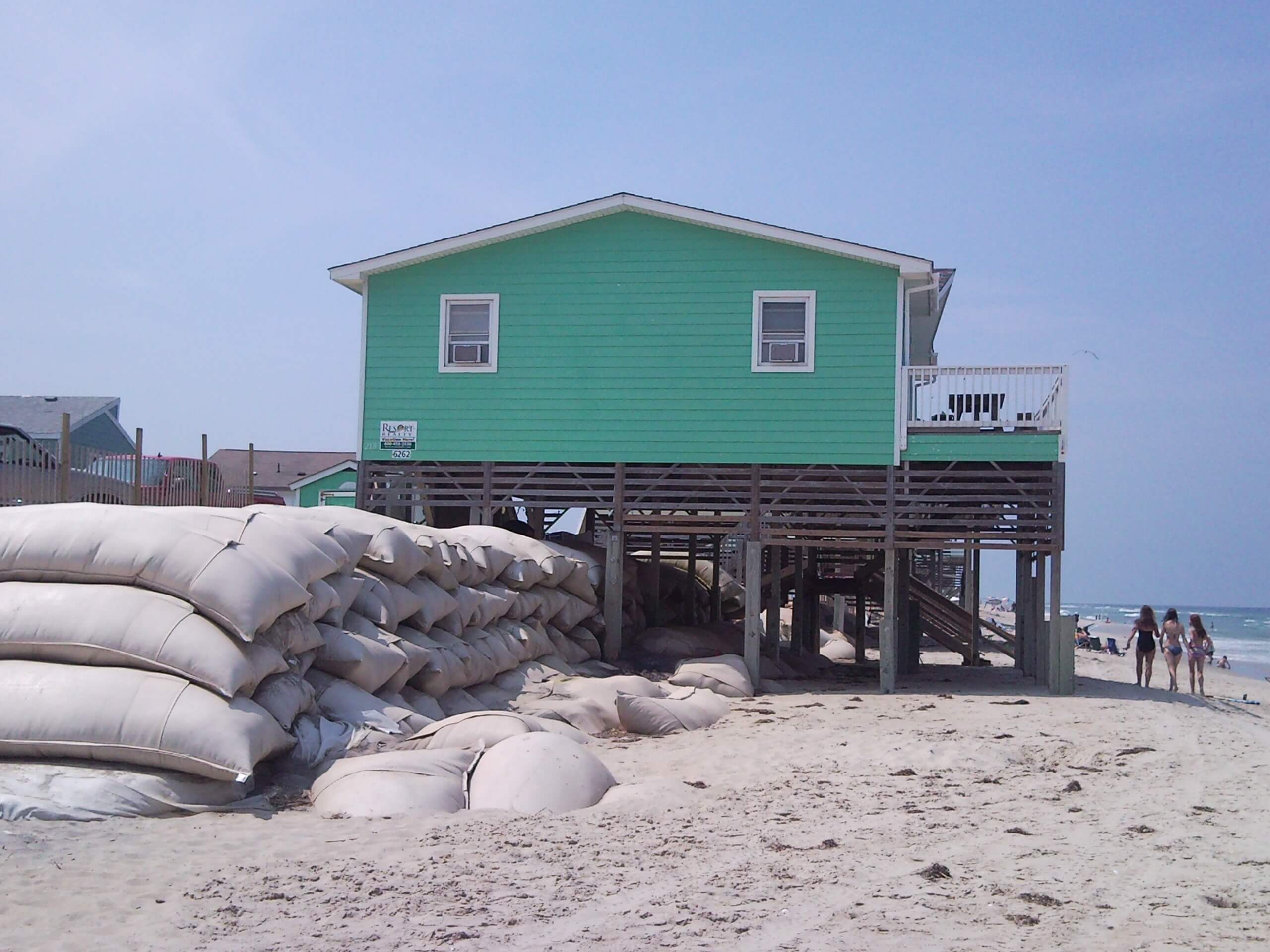
The practice of shoring up pilings and protecting buried septic systems with layers of massive sand bags is hotly debated. The practice is never a permanent solution, and most agree that it puts adjacent property at higher risk when the tides inevitably swirl past the barriers and wash away even more sand and land from behind the sand bags.
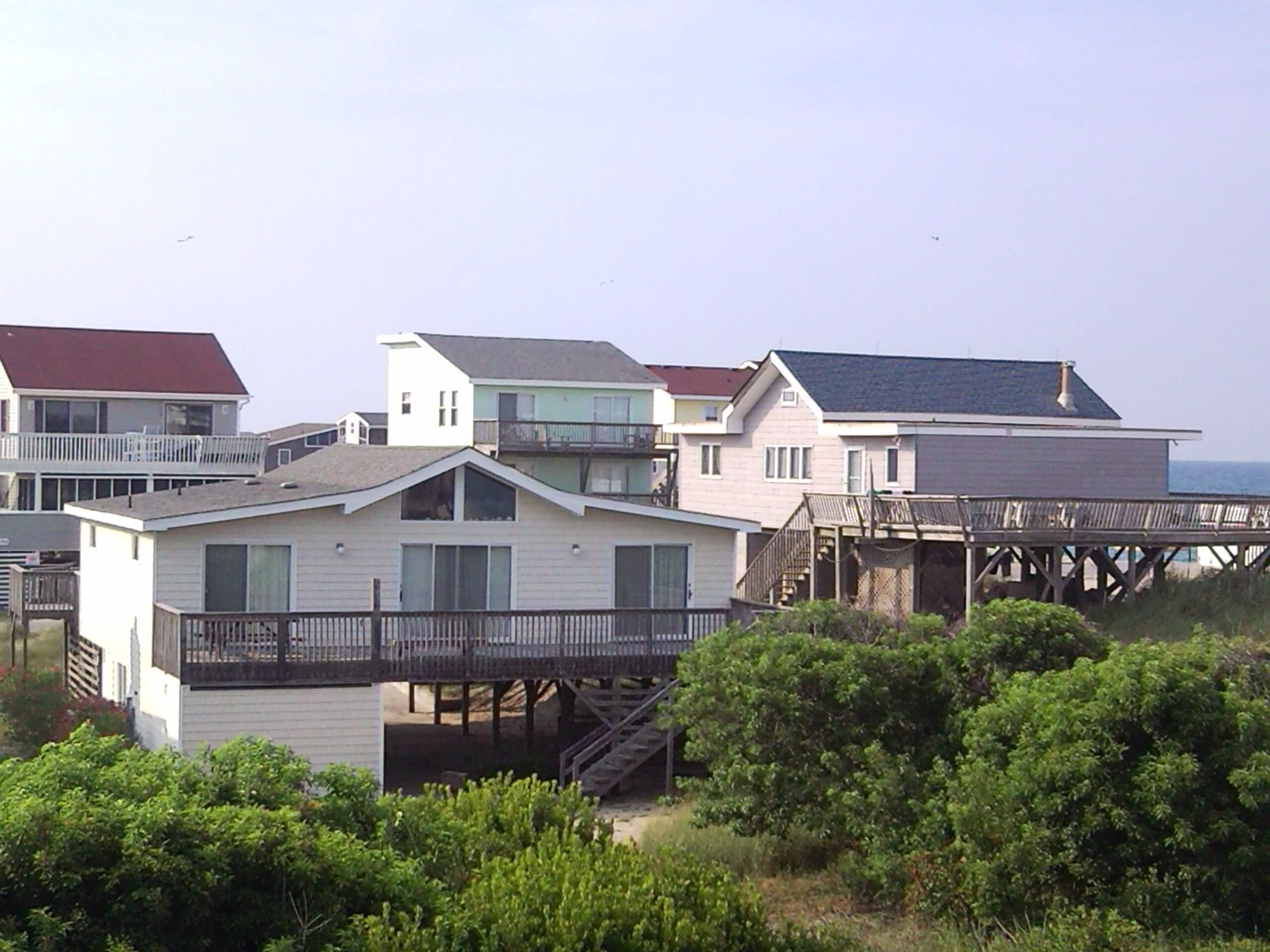
A more contemporary, yet very typical style of cottage is the basic beach box. This house characteristically has a large central living area/kitchen running front to back of the cottage, with bedrooms off each side. It is not done frequently, but beach boxes can be moved in their entirety and placed on a new set of pilings if they are jeopardized by the sea.
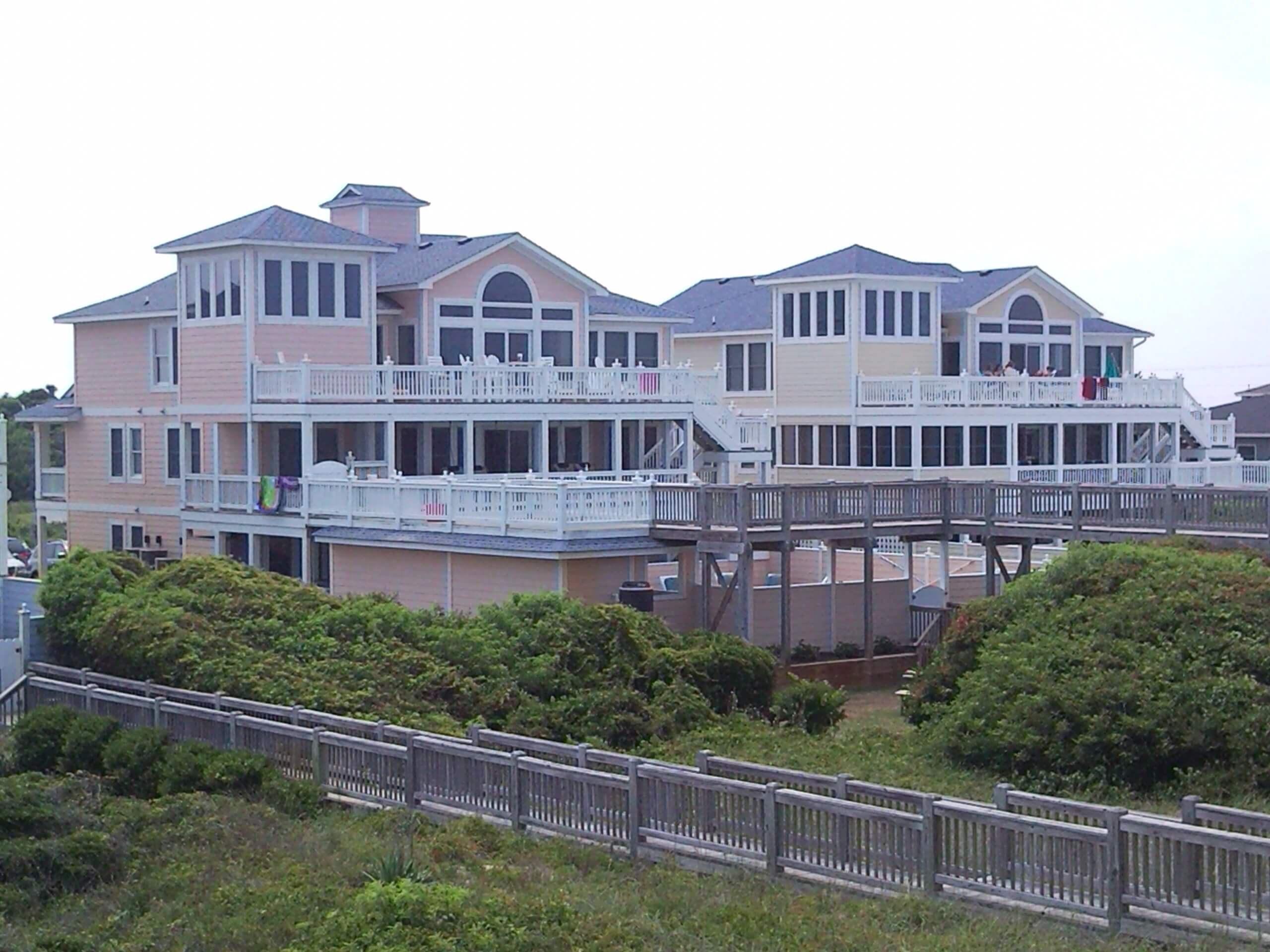
Yet another architectural addition to the Outer Banks can only be described as the McMansion. “New” construction of huge multi-storied dwellings, frequently in pastel colors, have many bedrooms, expansive living spaces, and modern conveniences like hot tubs and game rooms. Only time will tell if these behemoths will hold their ground against Mother Nature.
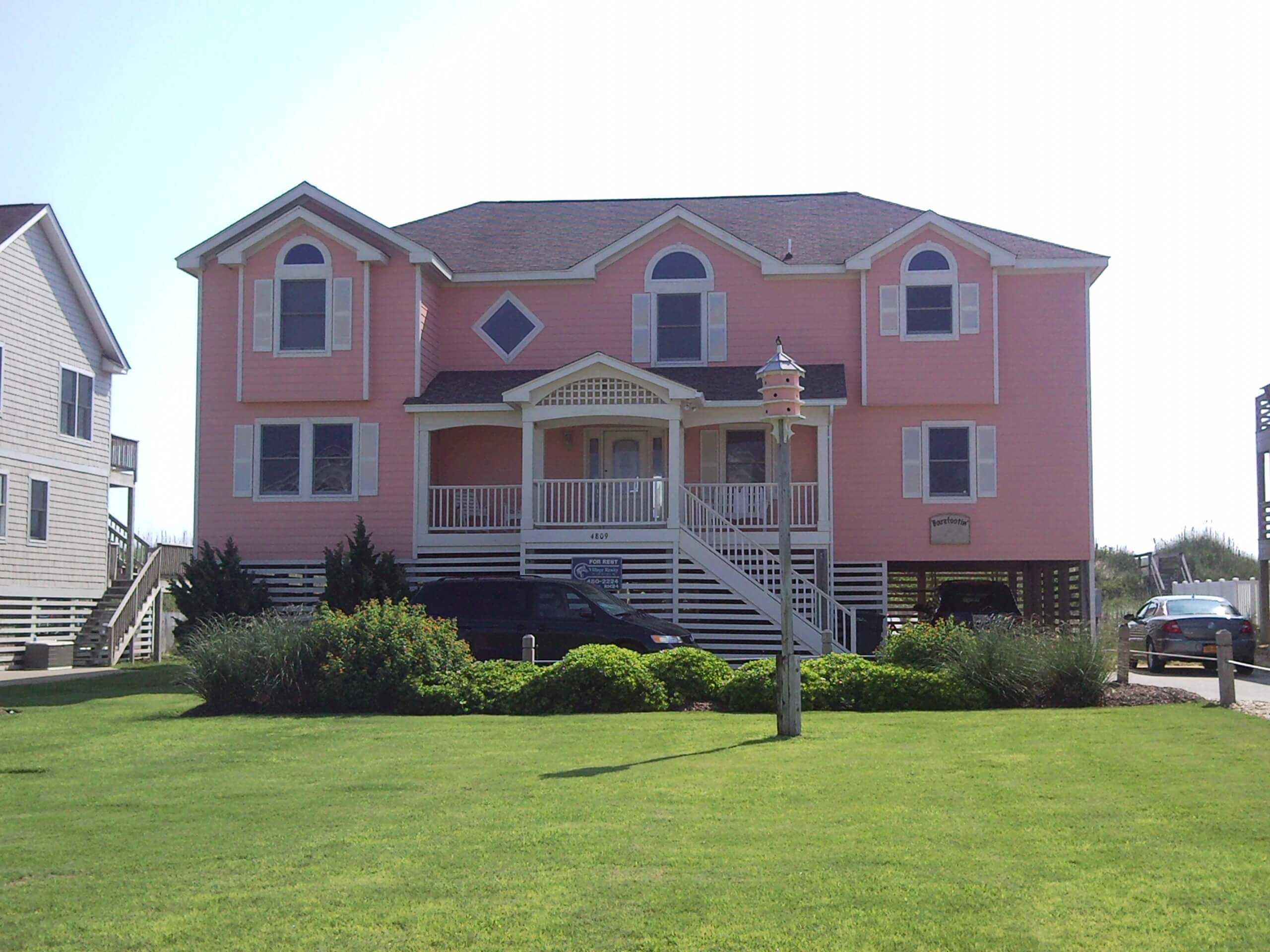
Today there are thousands of beach houses and cottages on the Outer Banks. Their individual characters vary as widely as their owner’s personalities. Some have lush landscaping, while others are au natural. Many sport widow’s walks on top for views of the sea or sound, and others have long board walks over the dunes to the water.
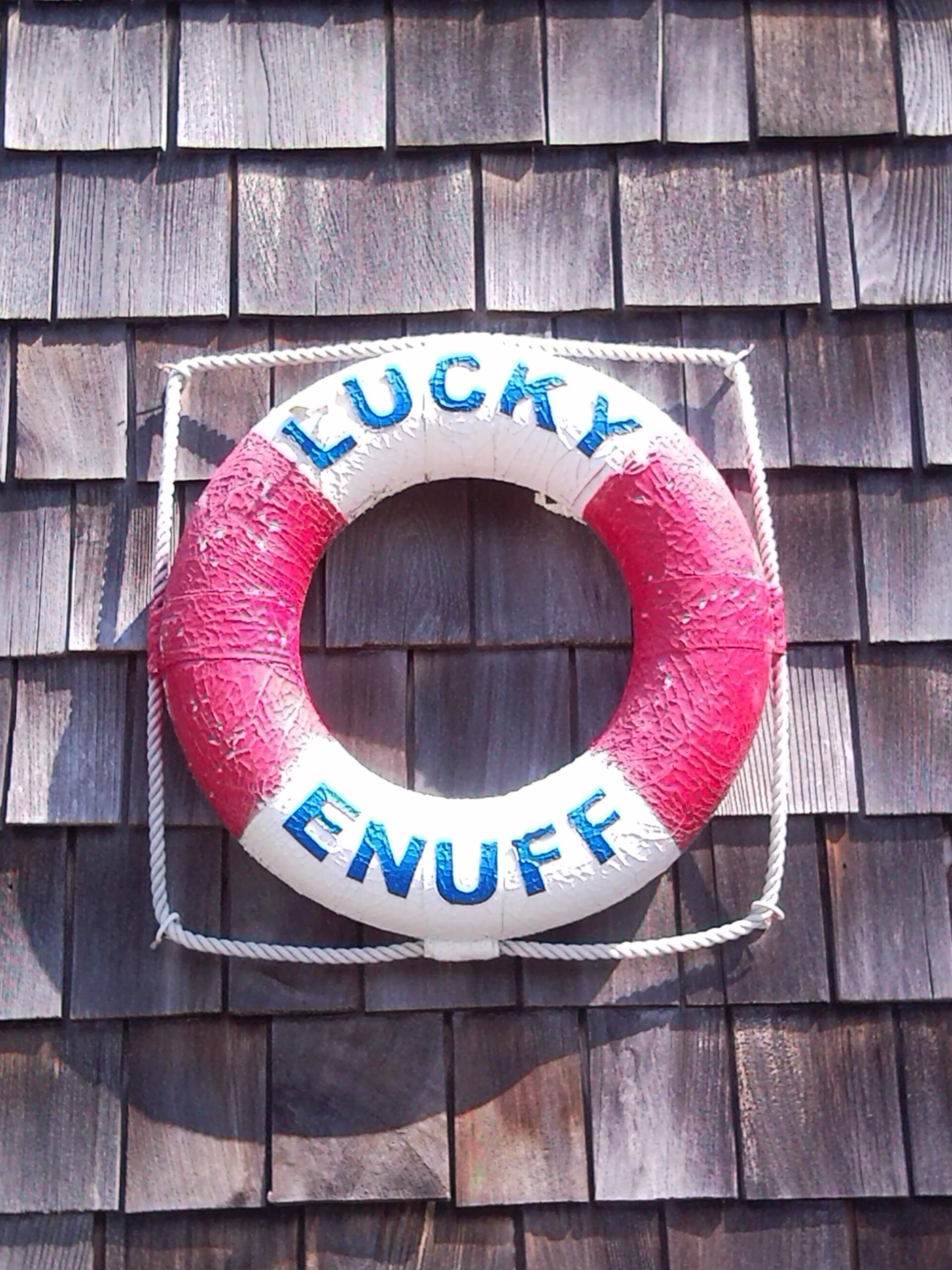
Many cottages show personality with names like Lucky Enuff or Laughing Gull. They come in many colors, sizes, and shapes, but their common denominator is their beautiful home of the ever-changing, yet historic barrier island known as the Outer Banks of North Carolina. Although it has changed quite a bit since the first tourist came, it is still well worth a visit. The area is full of history, natural beauty, and great restaurants, so consider spending your next vacation in one of the cottages of the Outer Banks.






beach houses are nice because you can swim anytime you want and the beach is a great view too:;-
i like to dip on a hot tub every morning and before going to sleep, it is really nice~~.
hot tubs with ceramic heaters are the best and they are safer to use too because the heating element is fully enclosed :~”